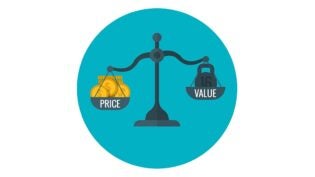10 Top Revenue Models Drive Viable Businesses Today
By: Marty Zwilling

I was mentoring some graduate students at a local university recently, and I sensed again that profit seems to be a dirty word these days to many aspiring entrepreneurs. I’m certainly not a fan of customer rip-offs, but even non-profits have to be cash-flow positive, or have deep pockets, to help anyone for long. Every business needs to develop a revenue model even before a product.
The alternatives range from giving the product away for free (revenue from ads), to pricing based on costs, to charging what the market will bear (premium pricing). The implications of the decision you make are huge, including brand image, funding requirements, and long-term business viability. It’s naïve to think you can sell below costs, and make it up by attracting more customers.
This may seem like Business Fundamentals 101, but the market changes rapidly, so I thought it might be useful to share what I see as the most common revenue models being used by businesses today. As an experienced business advisor, here is my current summary, with some of the pros and cons or special considerations for each:
- Product is free, revenue is from advertisers. This is the most common model used by online businesses and apps today, the so-called Facebook model, where your service is free, and the revenue comes from advertising. The challenge is to get the first million customers, before advertisers will sign up. Facebook spent $150 million getting started.
- Freemium model – people pay for upgrade. In this variation on the free model, used by LinkedIn and many other online and app offerings, the basic function is free, but premium services are only available for an additional fee. This also requires a base critical mass, and real work to differentiate and convert users to paying customers.
- Price based on product costs plus margin. In this more traditional product pricing model, the price is set at two to five times the product cost to cover overhead and operational expenses. If your product is a commodity, the margin may be as thin as ten percent. Use it when your new technology gives you a tremendous cost improvement.
- Price based on average value to customer. If you can quantify a large value or cost savings to the customer, greater than your cost, charge a price commensurate with the value delivered. This doesn’t work well with “nice to have” offerings, like social networks, but does work for new drugs and medical devices that solve critical health problems.
- Price with recurring low subscription payments. This is a very popular model today for Internet services, with monthly or yearly payments, in lieu of one higher up-front price. Advantages for your business include a stable revenue stream, customer retention, and increasing customer investment over time. The customer advantage is a lower entry cost.
- Tiered pricing based on volume on customer scope. In product environments, where an enterprise product may have one user or hundreds of thousands, a common approach is to price by user ranges, or volume usage limits. Keep the number of tiers small for manageability. This approach doesn’t typically apply to consumer products and services.
- Revenue is a percentage of every transaction. This is another popular model for platforms, e-commerce, and affiliates, where you as the transaction or product provider get a small percentage or royalty on every ultimate sale to customers by others. Amazon led the way on this one online, but distributors have long used this model in retail.
- Low product price, but support is extra.In this model, the product price is attractive or free, but the customers are charged for installation, customization, training and other services. This model is good for getting your foot in the door, but it is basically a services business with the product as a marketing cost. Customers generally dislike this model.
- Low entry price, with priced features additional. This approach works if your product can be configured “bare-bones” for a low price, and additional features priced separately. It is a very competitive approach, but requires design and development effort for value at every level. Expect extra costs for development, testing, documentation, and support.
- Low price base, make money on disposables. With this model, popularly called the razor-blade model, the base unit is often sold below cost, with the anticipation of ongoing revenue from expensive supplies. Today, think cheap printers with expensive ink cartridges. This is another model that requires deep pockets to start, so be careful.
If you don’t like any of these models, you can always try the non-revenue model, sometimes called the Twitter model, where you count on investors to sustain your costs while your valuation increases exponentially based on millions of customers. The nonprofit version of this is a service so valuable and recognized, like UNICEF, that you never run out of donors and philanthropists.
Yet smart people don’t count on being one of these, and have a plan to validate their business model, concurrent with their plan to validate their solution. Certainly you shouldn’t be afraid of using the word “profit” in your discussions with a business advisor, potential investors, partners, and even customers. A reasonable profit will make your idea a reality for all, rather than a dream.














